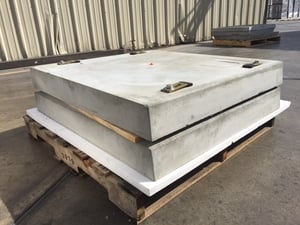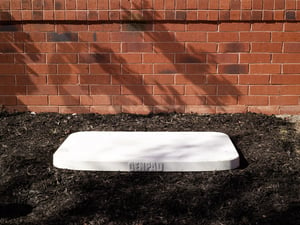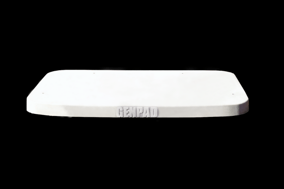Why GENPAD®?
GENPAD Generator Pads are the gold standard in equipment pads, specifically designed to meet the engineering specifications of Generac's air-cooled and liquid-cooled generators.
- Sturdy permanent base
- Won't shift over time
- Warranted for life of generator
- Easier and faster install than poured concrete
- Saves time and money
- Professional finished look
Contractors usually install generators in one of a few ways: on top of a bed of gravel, on poured concrete or directly on the ground. Each method works, but each has big problems.

Installing on the ground is the quickest, but to keep an expensive generator working correctly (not to mention within code and under warranty) it needs to sit up and out of the dirt and mud. Usually, people fix this by putting down a bed of gravel and setting the generator on top of it. Unfortunately, there is a problem. Gravel shifts and settles, and the waffle-board pattern on the underside of the attached plastic base will cause any generator to sink over time. Since generators weigh more on one end than they do on the other, they settle unevenly, and a dealer needs to make a return trip to relevel the unit.
Some contractors pour their own concrete and install the generator on top of that. This works better than the gravel and keeps the generator off the ground and on a solid surface that won't shift around. It works, but the big problem is cost—cost to bring in equipment, cost to pour the concrete, cost to wait for everything to cure before the generator can be installed. It's a big, messy hassle, especially when there are other jobs waiting.

Ground, gravel or concrete. They have their problems, but they were the only real options for installing a generator...until now. The GENPAD takes what works and gets rid of everything that doesn't. Both the 3" GENPAD and 4" Hurricane GENPAD keep generators out of the dirt and above grade, getting rid of the bed of gravel. The flat bottom levels the unit and keeps it from sinking into the ground. The solid construction replaces poured concrete, and the built-in zinc alloy inserts let you bolt the generator directly to the pad, eliminating damage to the unit from shifting or sliding.
Costs less than hauling and installing a bed of gravel, costs less than pouring a concrete pad at the site. Sturdy enough to support a residential generator, easy enough to set straight on the ground and professional enough to use in the biggest contracts.
Installing a GENPAD costs less than hauling and installing a bed of gravel or pouring a concrete pad at the site; is sturdy enough to support a residential generator; is easy to install and provides a professional solution for both big and small contracts.
